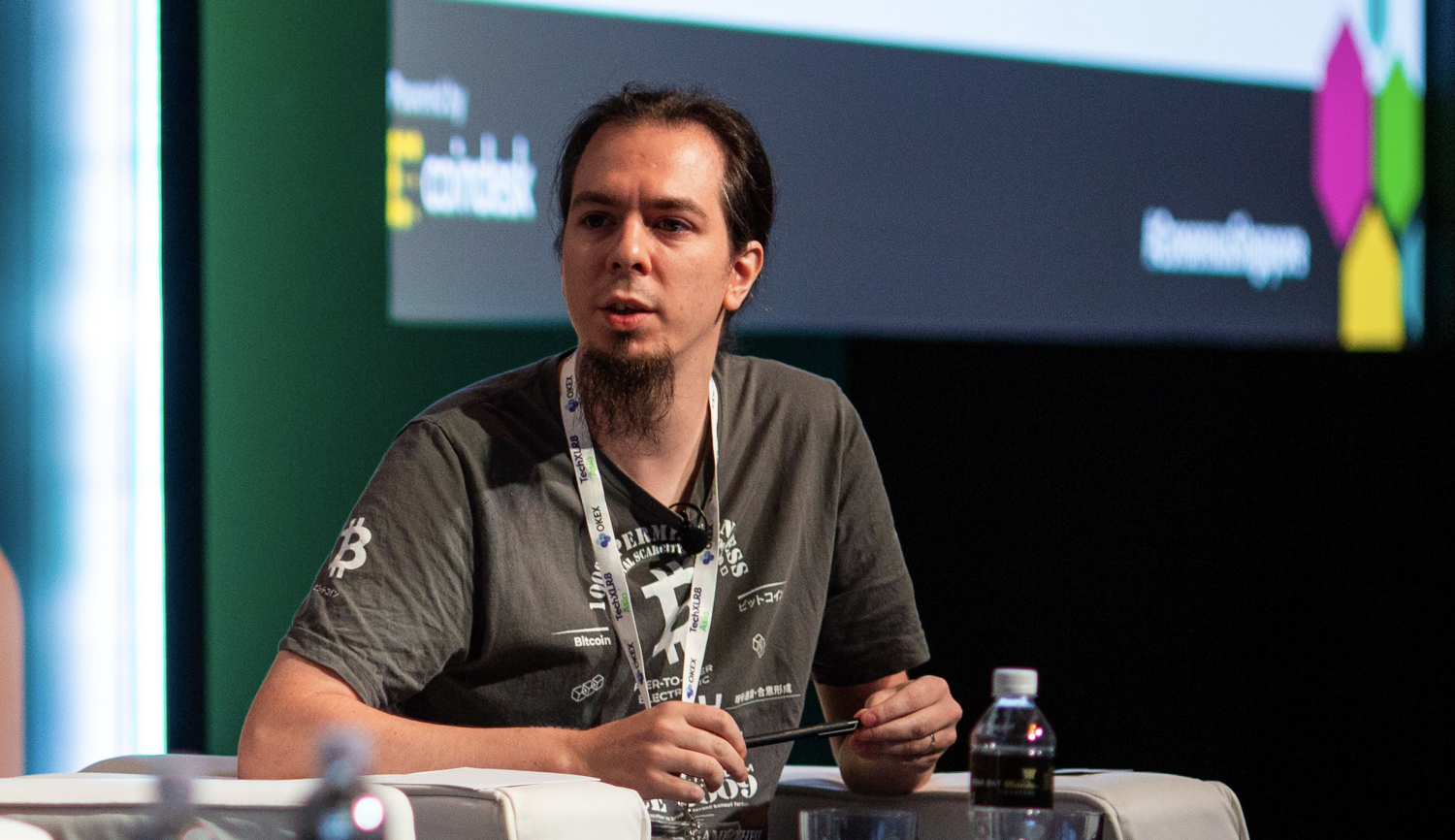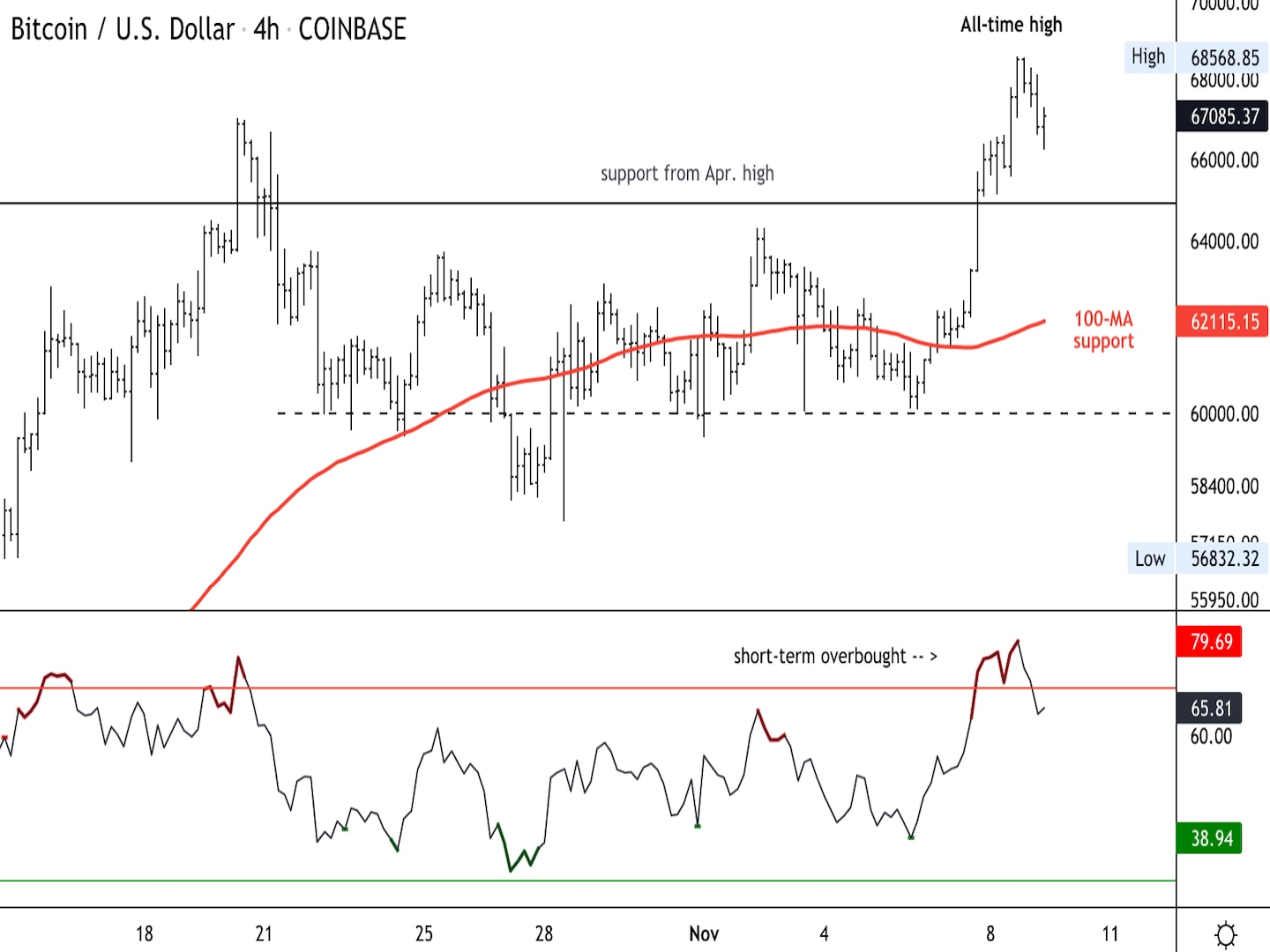Inventor of Ethereum’s ERC-20 Token Standard Plans New Blockchain ‘LUKSO’ for Creative Types
Yat Siu
Co-Founder and Executive Chairman
Animoca Brands
Where is Web3 headed? Take a look to the future with this pioneering investor in the metaverse and NFTs.
Yat Siu
Co-Founder and Executive Chairman
Animoca Brands
Where is Web3 headed? Take a look to the future with this pioneering investor in the metaverse and NFTs.
:format(jpg)/www.coindesk.com/resizer/Kjea5zGf89qzyacI8fZ49yhnaks=/arc-photo-coindesk/arc2-prod/public/S7SPGELTNBFITA3UBCS2CMRBQM.png)
Margaux Nijkerk reports on blockchain protocols with a focus on the Ethereum ecosystem. A graduate of Johns Hopkins and Emory universities, she has a masters in International Affairs & Economics. She holds a very small amount of ETH and other altcoins.
Yat Siu
Co-Founder and Executive Chairman
Animoca Brands
Where is Web3 headed? Take a look to the future with this pioneering investor in the metaverse and NFTs.
Yat Siu
Co-Founder and Executive Chairman
Animoca Brands
Where is Web3 headed? Take a look to the future with this pioneering investor in the metaverse and NFTs.
Fabian Vogelsteller, an Ethereum veteran who helped shape the ecosystem in the early days, is taking on a new venture – a blockchain to succeed where he says others have failed, in catering to creative, fashion-oriented and art-world types.
One of the 39-year-old, self-taught German programmer’s most significant contributions to the ecosystem was the invention of ERC-20, the blueprint for creating tokens that are compatible with Ethereum, which led to the infamous initial coin offering (ICO) boom of 2017-2018. Several of the biggest tokens by market capitalization are based on the standard, including Uniswap’s UNI, Shiba Inu’s SHIB and Arbitrum’s new ARB.
Vogelsteller is now turning his attention to a new project, LUKSO, a soon-to-be-launched layer 1 blockchain that he says is designed for the “creative economy.” As such, it would compete with Ethereum itself, by far the dominant smart-contracts blockchain with a market capitalization of $217 billion.
The recent years’ explosion in NFTs for everything from collectibles to art and music, along with a plethora of imagined metaverses, is a good reflection of the potential for creative-type applications on the blockchain, according to Vogelsteller. But he says the systems are nowhere near maturity, and hardly easy enough to use.
“One of the advantages for starting a new network was thinking about how we can improve the basic direction of the blockchain,” Vogelsteller told CoinDesk.
LUKSO will have a window of opportunity for validators to join the network. There will be a Genesis Validator Deposit Smart Contract on the Ethereum blockchain, which will go live in a few weeks.
Just like Ethereum was born out of Bitcoin, LUKSO will be born out of Ethereum, Vogesteller told CoinDesk: “We use Ethereum as an onramp in a way, like Ethereum used the Bitcoin network.”
On LUKSO, the Genesis Validator Deposit Smart Contract will allow users to deposit LYXe, an ERC-20 token that went live in a reversible ICO round in June 2020, to become a Genesis Validator. (Once the mainnet goes live, LYXe will be converted to LYX, the native token for LUKSO.)
Each validator on the LUKSO blockchain needs to lock up 32 LYXe in order to participate in the block validation process – similar to the 32 ETH that’s required to be “staked” on Ethereum to participate as a validator.
According to Vogelsteller, what’s stopping Ethereum from becoming mass-adopted is that the applications are not making the user experience easy. It’s hard for the average person to understand what address belongs to which wallet, and it takes effort to follow the movement of transactions on the chain. To solve this, LUKSO will introduce a comprehensive all-in-one profile that brings on-chain activity under a single entity, known as the “universal profile.”
Vogelsteller was born in a tiny German town, Unterwinbach, where he says he never really fit in. He moved to another small city, Schmalkalden, where he finished his studies. During university, where he focused on media design at the Bauhaus University.
“I never studied computer science or anything technical. Everything I know I learned by myself coding websites since I was 14,” Vogelsteller said.
In 2013, Vogelsteller first learned about blockchain. He also happened to meet the original Ethereum team a day before their pre-sale. Six months later, Vogesteller started working for the Ethereum Foundation (EF) in Berlin, where he built the first web3 browser, the first Ethereum wallet, and other developer tools.
During his time at the EF, Vogelsteller, together with Vitalik Buterin, co-founder of the Ethereum blockchain, pioneered ERC-20, which created a set of rules that tokens on Ethereum blockchain have to adhere to, making it easier for developers to know how any new ERC-20 token will behave.
Originally Buterin had proposed an initial token standard in 2015, but Vogelsteller looked at the proposal, changed a few things, and proposed ERC-20 to the Ethereum community to initiate a conversation. It was adopted in September 2017 and remains the de facto standard for fungible tokens on Ethereum.
Vogelsteller also first introduced the concept of a blockchain-based identity on Ethereum in 2017, known as ERC-725. It gave protocols the ability to create decentralized identity standards on Ethereum. While the Ethereum standard did not take off like ERC-20 did, projects like Origin Protocol implemented the standard.
By 2018, Vogesteller left the EF to focus his efforts on LUKSO, and improve on standards that he proposed during his time working on the Ethereum blockchain.
Now, Vogelsteller has drawn inspiration from the decentralized blockchain identity standard he created for Ethereum, but has turned that into a series of LUKSO Standard Proposals (LSPs), and the blockchain account at the heart of the ecosystem known as LSP0.
LSP0, which turns ERC-725 into a smart-contract-based profile, tackles the functionality and makes profiles more user-friendly on the blockchain. It combines a crypto type wallet, similar to an Ethereum account, with smart contract storage. In addition to having a regular crypto account attached to these profiles, users can link to any public information they want, like their Twitter account or NFTs.
On LUKSO, users, organizations and teams can create any profile they wish to identify themselves as in web3; the profile also would act as their blockchain account, making the user experience more seamless.
On Ethereum, if you hold a regular account, known as an Externally Owned Account (EOA), it’s impossible to add information like the user’s name, age, or other information to the public key address, meaning aspects of identity cannot be integrated into the protocol layer.
And while crypto users often enjoy using aliases or pseudonymity, having easy ways to identify what a user presents themselves online with their on-chain activity is missing. Vogelsteller believes that universal profiles solve this.
“It can be a wallet, but it’s way more than that,” Vogelsteller told CoinDesk. “It is a whole profile. It has a name. It has a picture. It can be managed by multiple devices, by multiple keys, with different levels of permission.”
The universal profiles also get key managers, which can let users add multiple keys to their on-chain account that are assigned or execute different actions. The Key Manager checks which key can do what on the universal profile, and can restrict specific activities of certain devices. In addition, having these multiple keys enables some kind of backup system in the event that a user loses access to a key.
There could be benefits for decentralized autonomous organizations (DAOs), onlines stores, services or anti-money-laundering know-your-customer (KYC) processes required by authorities; organizations are able to store, use, and cross-check the public information of a universal profile.
The idea of LUKSO is to become a whole ecosystem for creatives. Vogelsteller said LUKSO is “building a whole toolset and ecosystem and marketplace around NFTs using universal profile on the base,” making it easier to identify creatives and their profiles, and their works on the blockchain.
While the hype these days seems to be around “layer 2” scaling solutions for Ethereum, Vogesteller argues that LUKSO needed to be its own network.
He argues that the network capacity of these popular layer 2s and Ethereum is full. “Mainnet is full and it’s expensive.”
LUKSO is not the first blockchain to work on identity issues. Ethereum scaling project, Polygon, recently came out with Polygon ID, which uses Zero-Knowledge technology that allows users to verify their identities without revealing sensitive information. Other protocols like Ethereum Name Service (ENS) exist to help connect domain names to users’ wallet addresses, making crypto addresses more identifiable.
“When you put the profile on the blockchain, everything you do now with your profile is literally happening on the blockchain. So there’s a lot more things you can do now,” Vogelsteller said.
Edited by Bradley Keoun.
DISCLOSURE
Please note that our
privacy policy,
terms of use,
cookies,
and
do not sell my personal information
has been updated
.
The leader in news and information on cryptocurrency, digital assets and the future of money, CoinDesk is a media outlet that strives for the highest journalistic standards and abides by a
strict set of editorial policies.
CoinDesk is an independent operating subsidiary of
Digital Currency Group,
which invests in
cryptocurrencies
and blockchain
startups.
As part of their compensation, certain CoinDesk employees, including editorial employees, may receive exposure to DCG equity in the form of
stock appreciation rights,
which vest over a multi-year period. CoinDesk journalists are not allowed to purchase stock outright in DCG
.
:format(jpg)/www.coindesk.com/resizer/Kjea5zGf89qzyacI8fZ49yhnaks=/arc-photo-coindesk/arc2-prod/public/S7SPGELTNBFITA3UBCS2CMRBQM.png)
Margaux Nijkerk reports on blockchain protocols with a focus on the Ethereum ecosystem. A graduate of Johns Hopkins and Emory universities, she has a masters in International Affairs & Economics. She holds a very small amount of ETH and other altcoins.
Learn more about Consensus 2023, CoinDesk’s longest-running and most influential event that brings together all sides of crypto, blockchain and Web3. Head to consensus.coindesk.com to register and buy your pass now.
:format(jpg)/www.coindesk.com/resizer/Kjea5zGf89qzyacI8fZ49yhnaks=/arc-photo-coindesk/arc2-prod/public/S7SPGELTNBFITA3UBCS2CMRBQM.png)
Margaux Nijkerk reports on blockchain protocols with a focus on the Ethereum ecosystem. A graduate of Johns Hopkins and Emory universities, she has a masters in International Affairs & Economics. She holds a very small amount of ETH and other altcoins.









